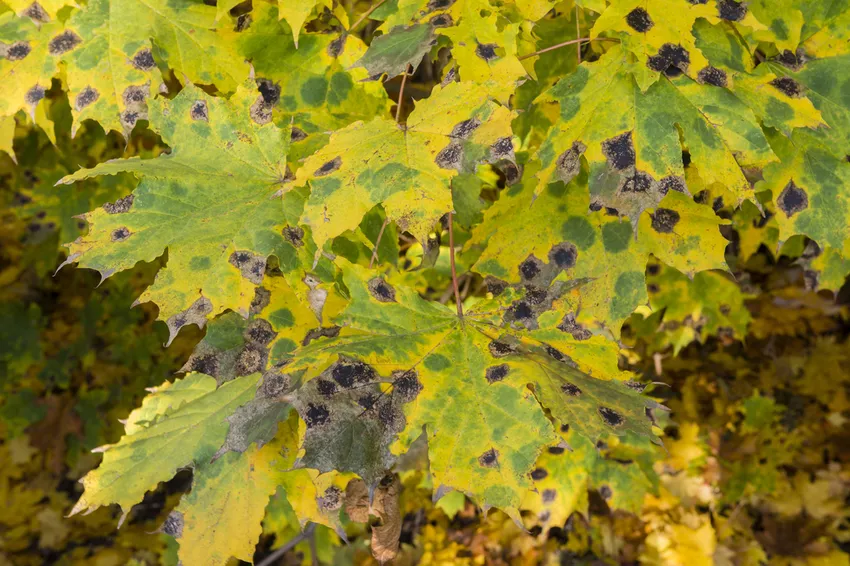- In the event of drought stress, maple leaves become limp
- Tar stains and powdery mildew disfigure the foliage - this has to be done
With spotted, hanging leaves, a ball maple loses its representative appearance. Mistakes in care and illnesses are the most common causes of aesthetic disasters. This guide provides useful tips on how to restore Acer platanoides Globosum to its former glory.
 Black spots on maple leaves are usually a sign of a fungal infection
Black spots on maple leaves are usually a sign of a fungal infection
In the event of drought stress, maple leaves become limp
As a typical heart root, a spherical maple spreads its roots mostly just below the soil surface. The strands only reach a depth of 80 cm and more in loose, sandy-loamy soil. Therefore, the tree is dependent on rain for a balanced water balance. If the sky keeps its floodgates closed, drought stress is inevitable and the leaves hang limp. This is what to do now:
- Water the maple regularly with normal tap water for the first 5 years
- Thoroughly water mature trees during summer drought
- Run the water hose for 30 minutes two to three times a week
By not watering every day in summer, but less frequently and thoroughly, you promote deep root growth.
Tar stains and powdery mildew disfigure the foliage - this has to be done
Black spots with a yellow border are the classic symptom of tar spot disease. An unsightly, mealy-grey coating indicates powdery mildew. Both fungal infections spoil the shapely leaves on the maple tree. How to act correctly:
- Tar stains: remove all maple leaves from the garden in autumn to break the development cycle of the pathogen
- Powdery mildew: cut off and burn all infected leaves
- Then spray the crown with a mixture of water and fresh milk in a ratio of 9:1
Treatment with chemical fungicides is unsuccessful for tar spot disease and unnecessary for powdery mildew. It is important to note that you do not dispose of infected maple leaves on the compost heap. Burn the foliage or otherwise remove it from the garden to prevent the fungal spores from being spread again next year by wind or rain.
tips
Does a maple already let its foliage droop in the weeks after planting? Then you put the young plant too deep in the ground. The planting depth within the nursery should be maintained as precisely as possible in the garden. Otherwise, the roots will suffer from a lack of oxygen and will stop supplying the crown.